Tamron SP 90 mm f/2.8 Di MACRO 1:1 VC USD
3. Build quality and image stabilization
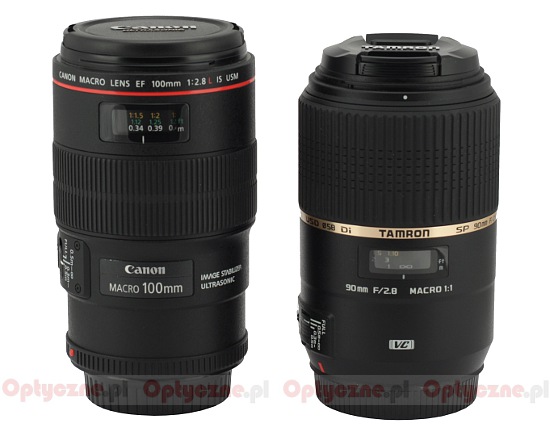 |
It is worth noticing that there was quite a leap concerning the weight and the dimensions, compared to its predecessor. The addition of an ultrasonic autofocus motor and an optical stabilization system made itself felt. It should also be mentioned that the new Tamron is a constructions with unchangeable dimensions – the old version featured an inner tube on which the front element system extended quite significantly when you passed to the macro mode.
Please Support UsIf you enjoy our reviews and articles, and you want us to continue our work please, support our website by donating through PayPal. The funds are going to be used for paying our editorial team, renting servers, and equipping our testing studio; only that way we will be able to continue providing you interesting content for free. |
- - - - - - - - - - - - - - - - - - - - - - - - - - - - - - - - - - - - - - - - - - - - - - - -
The tested lens is equipped with a metal mount which surrounds contacts and a rear element, less than 3 cm in diameter. The element is hidden inside the barrel about one centimeter deep. You can notice a narrow slit between a plastic cover of the element’s rim and the proper tube of the lens through which dust can get inside. The rim of the metal mount collar for a change features a rubber gasket. It’s a pity the producer was so inconsistent: on the one hand they provided a gasket to protect the instrument from humidity and dust, on the other hand they left that slit, making the lens anything but sealed…
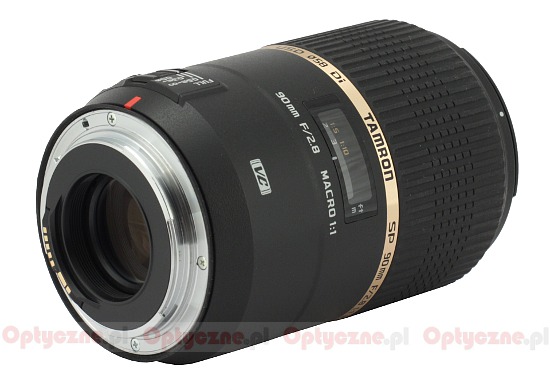 |
The outer tube cover is made of plastics. It starts with a red marking, making the alignment with a body easier. Then, looking from above, you see the ‘VC’ inscription meaning that optical stabilization was applied here. On the left side of that inscription there is a series of switches. The first one is used to choose the focusing mechanism working range: FULL, from 0.5 of a meter to infinity or from 0.3 to 0.5 of a meter. The second switch allows you to select one of focusing mechanism modes (AF/MF) and the third controls the stabilization (VC ON/OFF). Behind the switches there is also some information that the lens was produced in Japan along with its serial number.
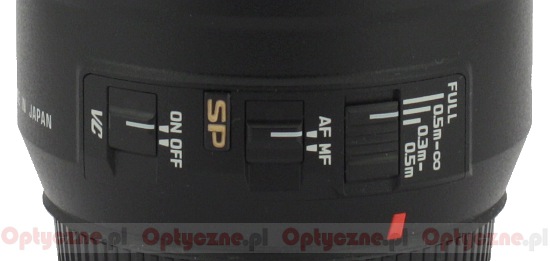 |
The next element worth your attention is a distance scale, positioned behind a window; it is expressed in feet and meters and, additionally, it shows the magnification ratio for values from 1:10 to 1:1. Still you can’t find any depth of field scale here. You should add that, while using 1:1 ratio, the photographed object is situated in the distance of about 14 cm from the front edge of the lens.
Further on you meet a golden ring on which there is a black inscription with the name and the parameters of the lens. Right behind it there is a manual focus ring, 45 mm wide. It is covered by comfortable rubber ribs, it moves smoothly and is well-damped. Running through the whole scale needs a turn through as much as 210 degrees. That value is significant but you should remember that most of the range concerns the macro range. Passing to the telephoto range, so from 0.5 of a meter to infinity, takes a move of the ring through just 50 degrees.
The manual focus ring turns very swiftly into a hood mount and the lens ends right after that. The front element is immobile, 48 mm in diameter, and surrounded by a non-rotating filter thread, 58 mm in diameter. The element is situated almost on the same level as the rim of the lens.
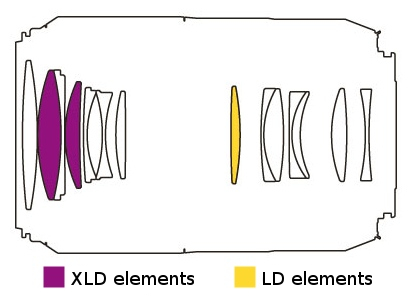 |
When it comes to the optical construction we deal here with 14 elements positioned in 11 groups. Among them there are three low-dispersion elements: two made of XLD (Extra Low Dispersion) and one made of LD (Low Dispersion) glass. Inside you can also find an aperture with nine diaphragm blades which can be closed down to f/32.
Buyers get both caps and a hood in the box. It is quite a modest accessory kit. For example you get a hard case and a hood extender with the Sigma. Even Canon, so stingy with accessories, can add a soft pouch.
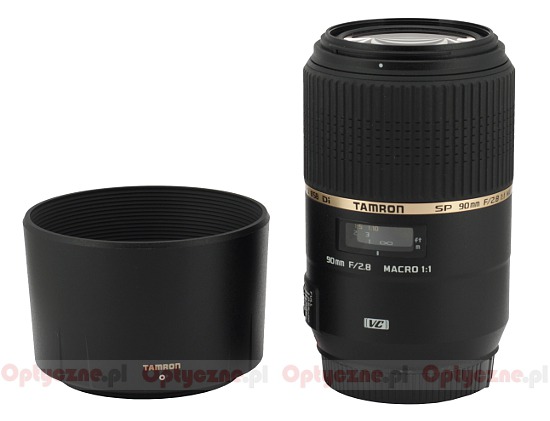 |
Optical stabilization
Currently most of the producers boast that their lenses are equipped with image stabilization as efficient as 4 EV. In most of cases that level is not reached, though. How the tested Tamron fares here? Let’s consult a graph, presented below.
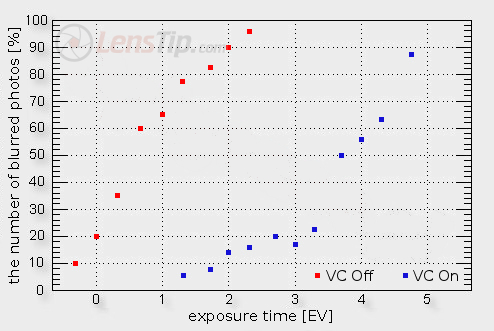
Here you can see the percentage of blurred photos correlated with the time of exposure expressed in EV where 0 EV corresponds to 1/80 of a second. As you see the maximum distance between those two curves reaches 3.5 EV and such is the efficiency of the Tamron’s 2.8/90 VC stabilization. It is a very good result, not far from the declared 4 EV and it compares favourably to the results of competitors.






